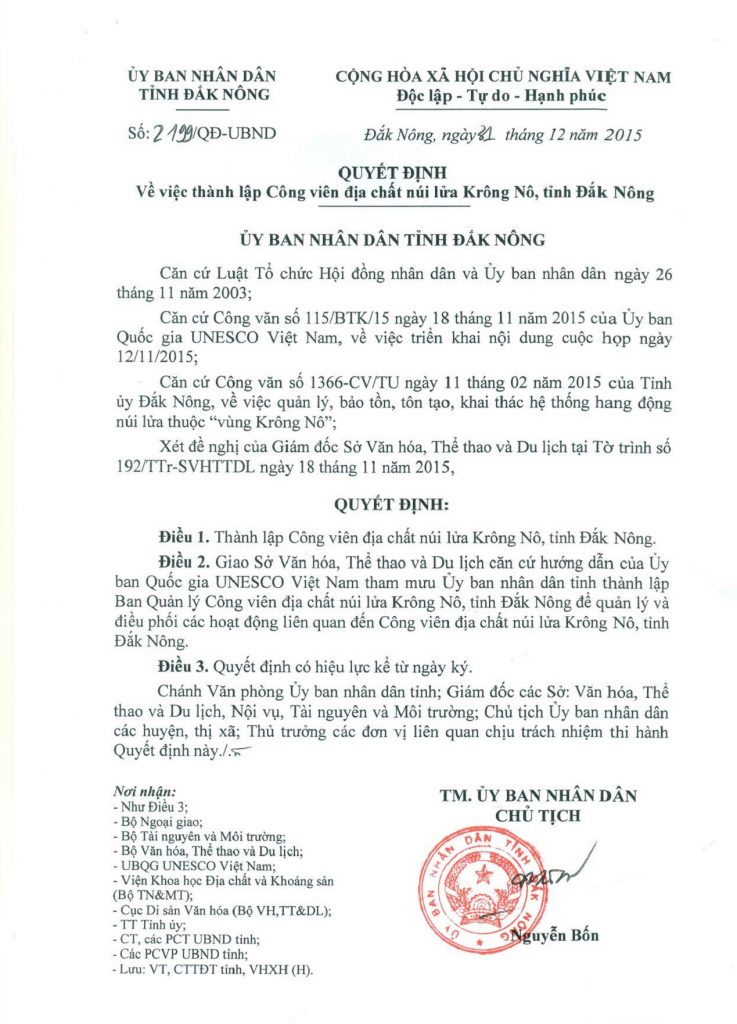Located in Tan Hoa hamlet, Dak R’moan commune, Gia Nghia city (near Dak R’Tih bridge), the petrified wood site is one of the characteristic geosites within Dak Nong Geopark where visitors can discover and learn about interesting phenomena of the Mother Nature.

Petrified wood is a special type of fossilized remains of terrestrial vegetation. The trees were covered alive by sediments or volcanic ash. Due to a lack of oxygen their aerobic decomposition takes place very slowly. Mineral-laden water flowing through the covering material deposits minerals in the plant’s cells; as the plant’s lignin and cellulose decay, a stone mold forms in its place. This is called permineralization, which can last millions of years. All the organic materials have been replaced with minerals (mostly a silicate, e.g. quartz), while retaining the original structure of the stem tissue.
Petrified wood has a variety of color ranges, commonly in gray, white-gray, orange, red, yellow, black-brown,… The petrified wood is believed to have been absorbed positive energy of the universe as it lies deep inside the Earth for millions of years.
Nowadays, petrified wood is found in many places around the world, such as in the Czech Republic, Greece, the United States, Argentina, Australia, Belgium, Brazil, China, Germany, Myanmar, Indonesia… In Vietnam, it is mainly found in the Central Highlands which occurred volcanic eruptions millions of years ago. Petrified wood here has different unique beautiful shapes with many patterns inside.
The petrified wood at Dak R’Moan commune is even more special, because the replacing mineral is not silica but iron hydroxide, making the typical color of red-brown.

In Vietnam, only visiting Dak Nong Geopark can tourists observe at least two levels of petrified wood on the tuffs along Gia Nghia City’s bypass. One is just c.1.0m below the ground surface; the other is 2-3m lower. They might have been formed under different eruption phases which might have been millions of years apart.
This is an interesting geosite for the Earth science education. In the future, this destination could play a better role in reconnecting the human beings back to the Earth’s history to feel and respect the blessings of Nature to our life.



